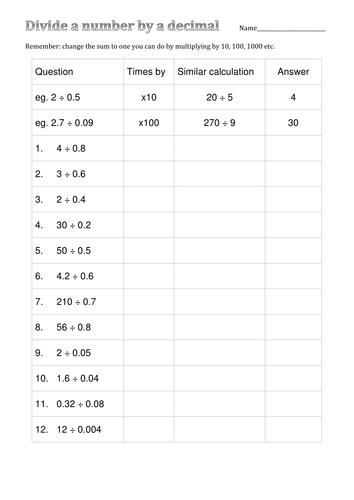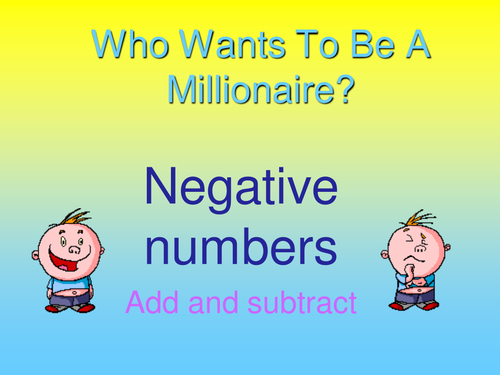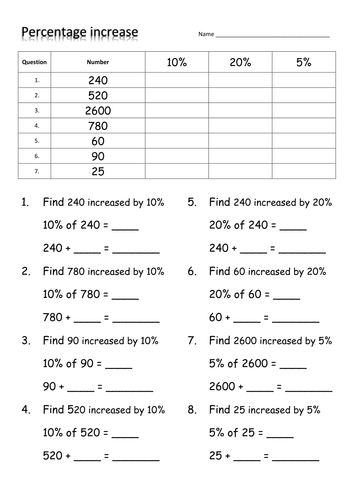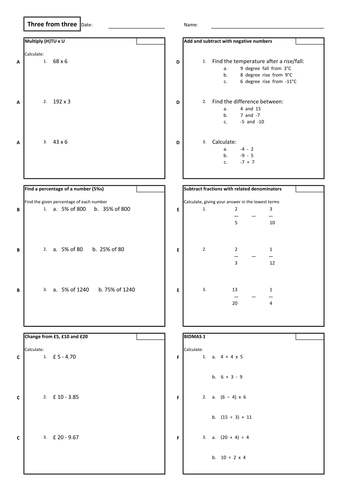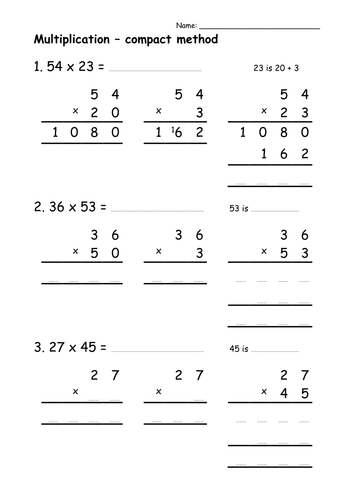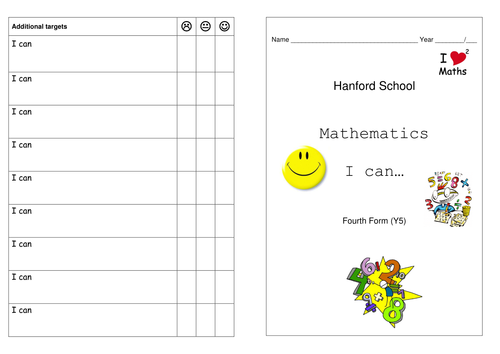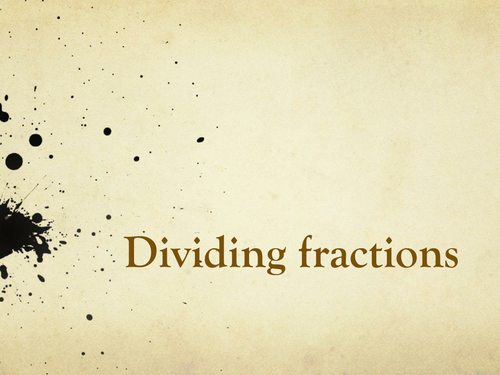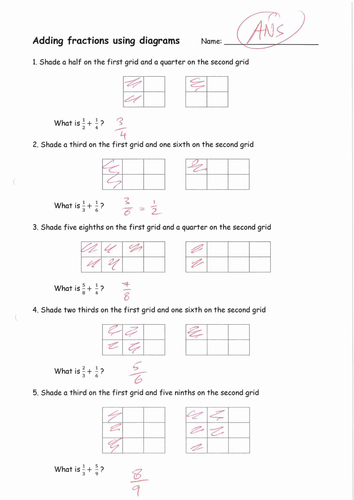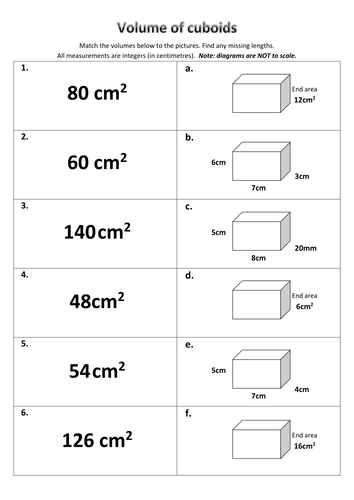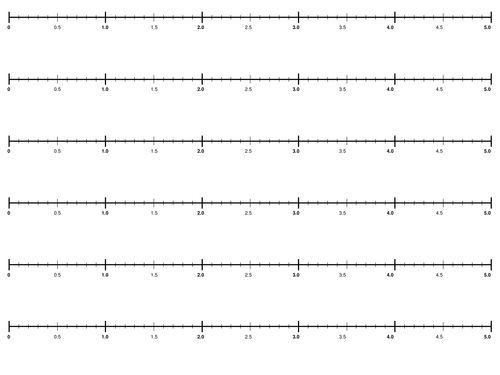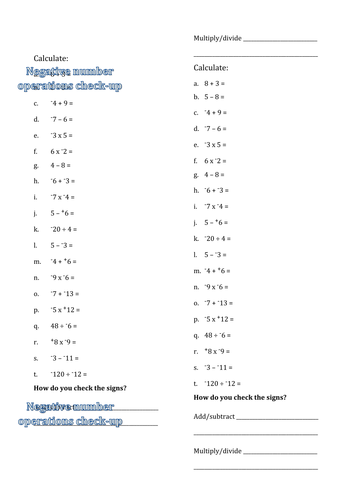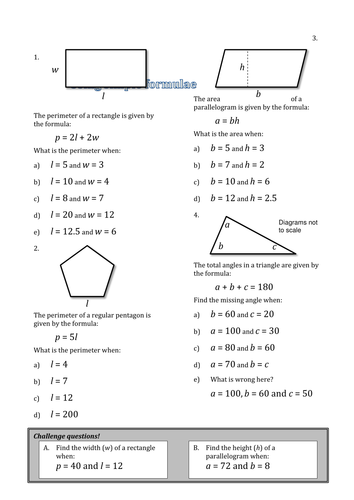
130Uploads
908k+Views
1051k+Downloads
All resources

Dividing by a simple decimal
Structured worksheet for dividing by a simple decimal. Uses principle of finding a similar calculation that gives the same answer - so instead of 36 / 0.09, find 3600 / 9.
(12/7/16) Answers uploaded

Factorising, functions and graphs
This links factorisation of linear expressions (where the term in the bracket is in the form y=m(x + c/m)) to the intercept with the x-axis. It lays the foundation for the same concept when factorising quadratics. It could be developed by examining y = c - mx or y=m(ax + c/m).

Factorising from pictures - Sit 'em down
Presentation that introduces factorising by trying to split arguing kids into equal groups with equal numbers of adults. Goes on to algebraical representation without pictures.
Worksheet and answers now together here

Expand brackets with party bags!
Brackets are compared to party bags! So expanding is just finding out how many items altogether.
Hopefully simple, visual explanation of concept followed by some quick questions. Used alongside mini-whiteboards.

Millionaire - operations with negatives - easy and hard versions
Classic Millionaire format. You may wish to add brackets around negative numbers, or otherwise reformat. Two versions - one with just add/subtract, other much harder with combinations of operations, squares/cubes etc.

Percentage increase - scaffolded worksheet
First find 10, 20 and 5% of some numbers. Then questions using these values. Finally questions with other values and with guidance on how to get the correct amount. Could be calculator, but sums should be easy enough without.
[3/2/16 Second version added for pupils who need further practice. 12/7/16 Answers uploaded]

Construction of simple 2-D shapes
Construct four triangles and a parallelogram by following instructions. More of the correct technical language used further down the sheet.

Chronological age - calculator sheet
Spreadsheet that calculates chronological ages. It works (I hope!) correctly for months of different lengths etc. (No awkward cludges of dividing days by 30 to get months.)
First tab on the sheet is set up so you can enter a whole class. The second tab is just for quickly checking single dates of birth.
The main calculations in the first tab are carried out in columns D to J, which are hidden. If you look at the formulae, you will see that the formula is far from elegant - but calculating chronological ages is not an elegant process! I realise that the year calculation could be simpler, but I couldn't be bothered to edit it...

Three from three v2
Worksheet generator: 6 sets of 3 randomly generated activities based on key mathematical skills selected by the teacher on single page for printing.
Add, subtract, multiply, divide, place value operations, decimals, negatives, BIDMAS, rounding, percentages, fractions...
Each pupil in the class is allocated 3 topics to complete in lesson/homework. Idea is to get all 3 questions right for your 3 topics. When pupil gets all 3 questions correct for any given topic, they get a sticker on a pupil record sheet. 3 stickers for that topic means they have mastered it and will not have to do it again :)
Warning: Macro-enabled spreadsheet. Macros MUST be enabled when you load the sheet in order to use the navigation and copy/paste buttons.
Read the Instructions document for further details. A Teacher Record (for use on your computer) and a Sticker Sheet (to put on your wall) are provided.
[12/7/16 Minor improvements/additions]

Multiplication - developing the compact method (long multiplication)
Worksheet that breaks down multiplication of 2 digit numbers to develop understanding of the compact method
[14/9/15 - mistake corrected]

I can statements - Y5 to Y8 maths
A set of self-assessment statements with three 'levels' (effectively 'little idea', 'getting there' and 'pretty confident'). Based on the ISEB Common Entrance syllabus for maths but, as this is aligned to the National Curriculum, it should be broadly applicable.
The order of the statements reflects my scheme of work, but of course they can be moved around. I intend to cut them up and paste as a booklet.
For Y7 & Y8 there are two levels, reflecting the fact that CE 13+ has two (main) levels. These might be seen somewhat as early 'foundation' and 'higher'.
There is a need to consider teacher (peer?) validation of self assessments. I will probably ask classes to complete at the end of a unit, perhaps dating their selection. I may initial in the margin if I agree they have reached a reasonable level of mastery. I may also ask for an initial tick before they start a unit.

Fractions - 4 rules millionaire
Powerpoint in Millionaire format. All 4 rules for fractions, starting from add/subtract then multiply/divide. Mixed numbers and simplifying involved at different points. [6/5/15 edited to remove duplicate false answer on Q1.]

Fractions - dividing explained
Dividing fraction by whole number and vice versa; divide v=fraction by fraction. Slide towards end to discuss results so far to try to elicit "invert and multiply" rule. Two examples with diagrams for each.

Fractions - adding using diagrams
Shade diagrams to add fractions. Fractions without common denominators. First 5 when in same times table, then 3 in different tables. These diagrams pre-drawn and not explained; plus seven questions where pupils need to draw diagrams in their own books.
(Assumes the general idea is already familiar from earlier in curriculum, but you may wish to discuss common denominators and equivalent fractions before they go on to drawing their own diagrams.)

Volume of cuboids - match cards
6 pairs to match. 3 with full dimensions (one unit conversion needed). 3 with end area and missing length, but should be able to match by eliminating possibilities. Find missing dimension for last three (all integer values).
Quick starter/plenary.

Divide by a simple decimal
A presentation showing how to divide by (say) 0.2 or 0.5. Introduces idea at the end of rewriting the sum by increasing both dividend and divisor by power of ten.
Supporting file has decimal number lines (0-5, 3 different sets of scale markings) for printing on A3 for students to use - you may want to cut up and laminate.
[15/7/15 improved from user feedback]

Negative number operations check-up
Add/subtract mixed with multiply/divide, seeking to clarify which signs you need to look at when deciding how to use signs in the answer.
Straight-forward worksheet (2 copies per sheet - chop in half!).
(12/7/16) Answers uploaded

Big data
A set of spreadsheets for use in ICT, with links to history, geography and PE. The intention is for learners to be able to sort, select and analyse data from a larger data set.
The files are:
- Monarchs (English/British from Alfred) with dates, ages, spouses and children
- HDI data on countries in 2000 (the distinction for LEDC and MEDC was arbitrarily drawn) with population, GDP, literacy and other measures
- World cities 2004 with population (over 1m), country and rank
- 2012 athletes with country, height, weight, sport (but not medals)
- World top track times 1999 with event, gender, country, name, time, rank, date
- Periodic table with name, symbol, mass, density, melting, boiling

Substitute in simple formulae
'Quick' worksheet with perimeter of rectangle and pentagon, area of parallelogram and angles in a triangle. Four questions on each.
For brighter Y6 (starting algebra) but also for lower ability secondary.
(12/7/16) Answers uploaded

Averages from bar chart
Extract discrete data from a bar chart and use to find mean, median, mode and range. Starts by considering a table of data and then two examples of bar charts.

